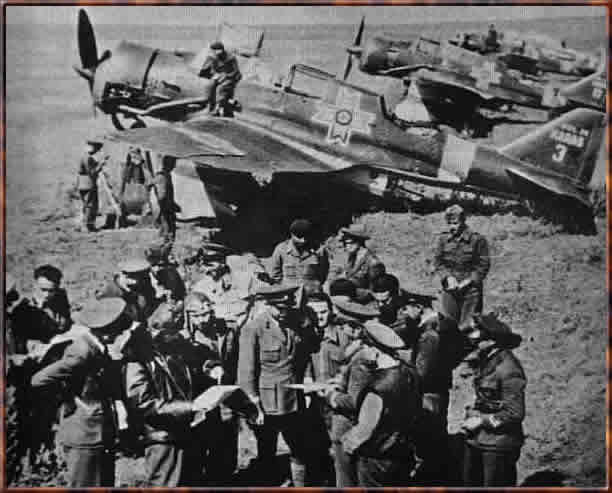The squadron flew its first combat mission on the 20th of October 1942. The P-23's were employed as light bombers or for reconnaissance purpose until early 1943, when all of the Polish planes were withdrawn from frontline service, since maintenance was almost impossible due to lack of spare parts, and they had become totally obsolete. The P-23's had been sent home from the 31st of December. Remaining P-23's were employed only as trainers back home.

It seems that in late August 1944, the ten still airworthy P-23's were used in a few bombing missions, but this is unconfirmed. After the war, all survivors were scrapped, as none was capable of flying any more.